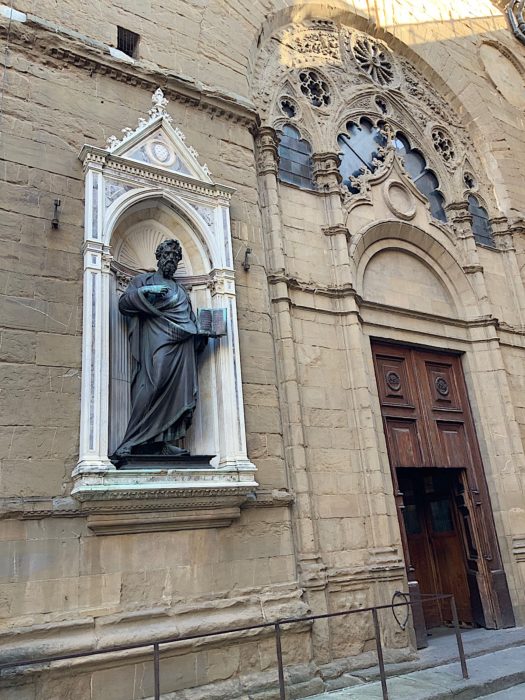
Age
1290 (?)
Designers
Arnolfo di Cambio, Francesco Talenti
The church, one of the most original of the city, is located in Via dell’Arte della Lana. It preserves in its name the memory of an ancient oratory, surrounded by a large vegetable garden, which stood in the same place, dedicated to San Michele Arcangelo (San Michele in Orto). In ancient times the building, due to Arnolfo di Cambio, was a loggia used for the corn market; in 1304 the loggia was destroyed by a fire and it was rebuilt from 1337 by Francesco Talenti. At the end of the XV-th century the loggia was transformed into a church of the Arts, the ancient Florentine corporations, protagonists of the economic prosperity of the city. The building, an important example of late gothic architecture, has a unique two-storey structure, characterized by fourteen niches onto the exterior façades. Above each tabernacle, at the top, there are large medallions (tondi) where the art owner of the corresponding niche below inserted his own coat of arms; this could be a fresco (now almost illegible) or polychrome glazed Terracotta (still well visible and often of great value such as those of Luca and Andrea della Robbia and Niccolò di Pietro Lamberti). The niches were decorated between the fifteenth and sixteenth centuries by the main Florentine Arts; each niche houses a statue depicting the Patron Saint of the corporation; the statues were made by important sculptors such as Ghiberti, Donatello, Verrocchio and Brunelleschi. The statues that can be admired today are copies; the originals, made of Marble or Bronze, are kept in the Museum of Orsanmichele, housed in the upper floors of the church.
The façade is realized in Pietraforte Sandstone and Plaster, the mullioned windows are in Apuan Marble, the statues are made of Apuan Marble and Bronze, the coats of arms in Polychrome Glazed Terracotta. In some cases the interior of the niches is in Apuan Marble like the external decorations, in other cases is in Pietraforte Sandstone or in other stone materials.
